Hospitals gearing up to meet Joint Commission's anticoagulation goals
JCAHO has set new patient safety goal related to anticoagulation that hospitals must meet.

According to the Joint Commission, the use of standardized practices that include patient involvement can reduce the risk of adverse drug events associated with anticoagulation medications such as unfractionated heparin, low molecular weight heparin (LMWH), and warfarin. Therefore, a new requirement (3e) was added to Goal 3 of the 2008 NPSG, which applies only to organizations that provide anticoagulation therapy. "The goal of the new requirement is to reduce the likelihood of patient harm associated with the use of anticoagulation therapy," stated Fred Pane, R.Ph., senior director, pharmacy affairs, Premier Inc.
The new requirement has a one-year phase-in period that includes defined expectations from the Joint Commission for planning, development, and testing milestones at three, six, and nine months in 2008, with full implementation by January 1, 2009. The first milestone has a target date of April 1, 2008, in which the organization's leadership should have assigned responsibility for oversight and coordination of the development, testing, and implementation of NPSG Requirement 3e. By July 1, 2008, there should be an implementation plan in place that identifies adequate resources, assigned accountabilities, and a timeline for full implementation by January 1, 2009, and a pilot test in at least one clinical unit is expected to start by October 1, 2008.
Once the failure modes and potential areas of risk were identified, each of the team members classified them into categories in terms of their level of risk and they were scored based on the likelihood of them happening and how severe they might be. "If there was a disparity among team members, there was a discussion to identify the reason for the disparity from each person's perspective. What we wanted to do is identify the true risk to the patient and identify the process with the highest risk," Parry explained.
The analysis led to process changes that were put in place to minimize the potential for error in key areas. "Once we did a process change, we went back to look at the potential failures of that change to make sure we were not creating something worse. As a result of the process analysis, a systemwide team was chartered to develop DVT (deep vein thrombosis) prevention guidelines. Additionally, a pharmacist-run inpatient anticoagulation management program is in the final stages of development and we have made changes to the paper and electronic medical record process," added Parry.
Summa Health System, based in Ohio, has also established an interdisciplinary group, similar to Geisinger's, to reduce the likelihood of patient harm associated with the use of anticoagulation therapy. Summa has an order set in place for heparin, which includes monitoring as a standard part of the order. Additionally, obese patients and patients with renal impairment do not receive LMWH, but instead get subcutaneous unfractionated heparin. Another top priority that NPSG identified was that for patients being started on warfarin, a baseline international normalized ratio (INR) is available. And for all patients receiving warfarin therapy, a current INR is available, and used to monitor and adjust therapy. "Currently the INR is ordered for initiation and monitoring is ongoing with lab values. The process needs to be formalized and policy established," concluded Stephanie C. Peshek, Pharm.D., FASHP, pharmacy system director at Summa.
The Webcast can be viewed at http://www.premierinc.com/ and more information on the National Patient Safety Goals can be found at http://www.jointcommission.org/.
THE AUTHOR is a writer based in New Jersey.
How PBMs Impede Pharmacists’ Ability to Perform Clinical Services | APhA 2025
March 31st 2025Antonio Ciaccia, President of 3 Axis Advisors, led a discussion on pharmacy benefit manager reform and how the inability to pass legislation has led to increased financial hardships in community pharmacy.













